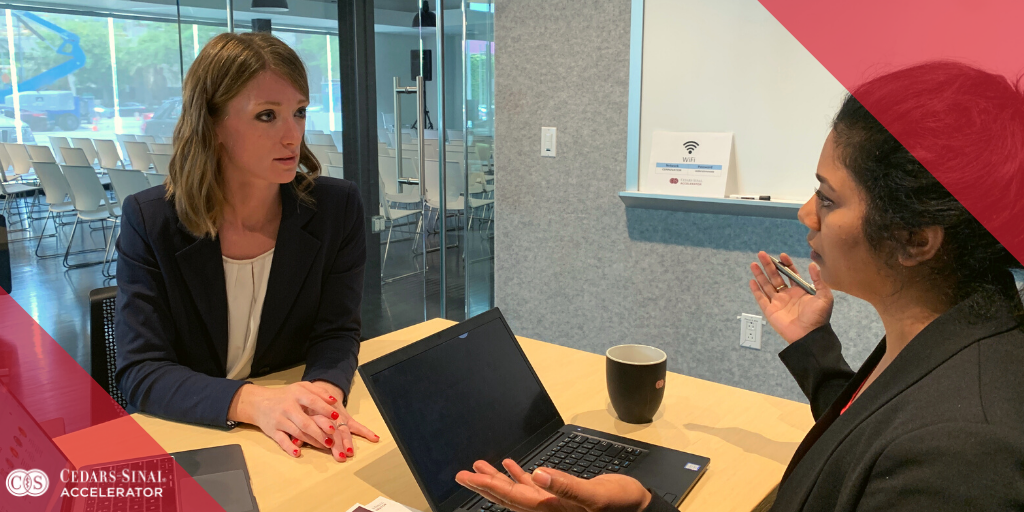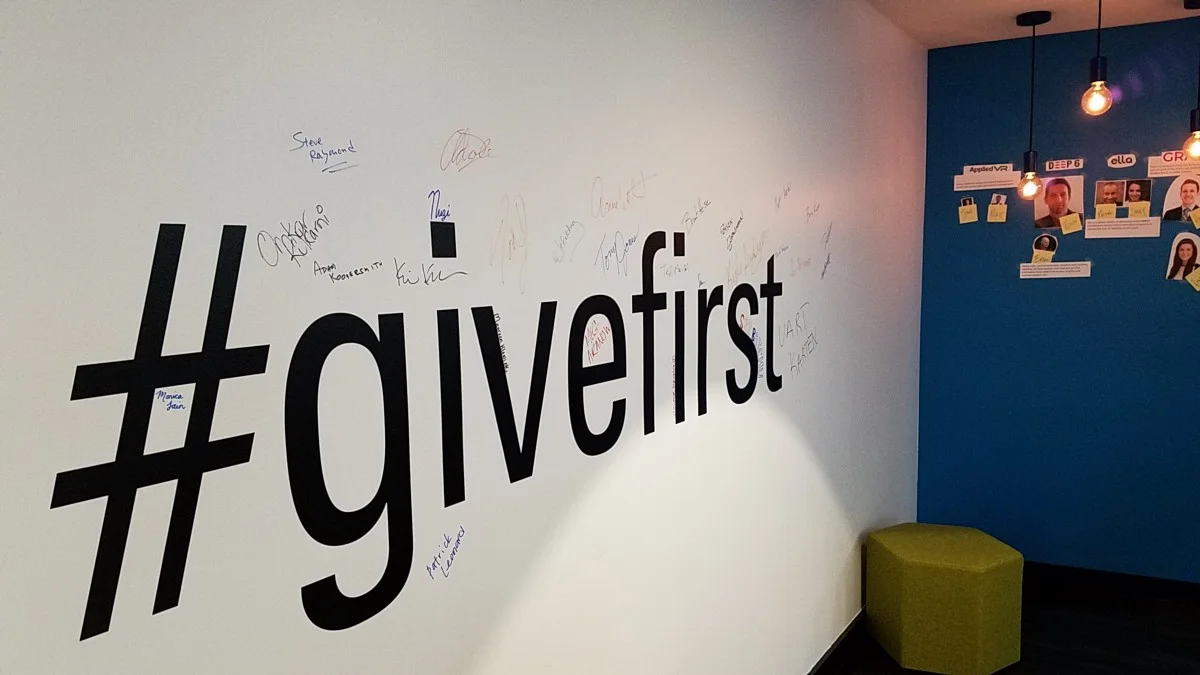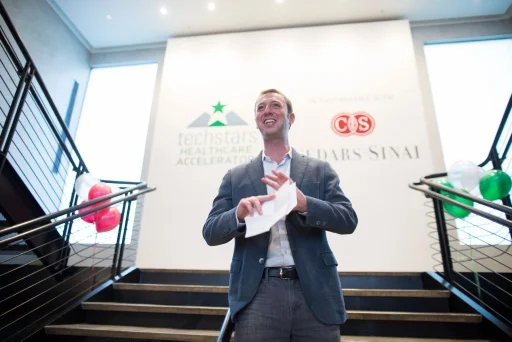The third week of the Techstars/Cedars-Sinai accelerator was really pretty crazy. Between our official, round-robin style meetings with mentors (back-to-back, 25 min each), feedback sessions with physicians, and other appointments we crammed onto the calendar, Maggie and I met with about 45 different stakeholders last week.
Just like week two, we heard lots of varied opinions. And, just like week two, we saw a lot of this kind of expression around the CS Spaceship. Do we regret it? No. Are we somewhat confused? Yup.
Aside from meetings from dawn to dusk, week three was also a big week for Inscope Medical because we had a new prototype to test with physicians. I even got to take our prototype into the amazing patient simulator lab that C-S uses for training and intubate a dummy with the newest Inscope Direct Laryngoscope.
Unfortunately, during all this testing, we found a few more design details that need to be fixed. And that brings me to what I learned (or re-learned) last week. Fair warning, it was a densely-packed week.
We tend to value losses more than we value gains. While I’ve read about loss aversion before, I had a very personal experience with it this week and it was fascinating to step back and analyze my reaction. I made a mistake with a design decision a few weeks ago that was realized this week. That mistake will cost us about $5–10k to fix and 2–4 weeks of development time. In the grand scheme of things, it’s a minor loss that won’t kill us.
However, finding that mistake hurt. It hurt really bad. For about a day, I was an angry mess. I couldn’t forgive myself. What struck me later though, is my negative reaction to this setback was significantly stronger than my positive reaction to the budget/timeline savings we managed to find in week two, despite those savings being greater in magnitude than the losses. Adding the week two gains and week three losses, we’re still looking at a net positive. Yet, I spent a day angry at myself for a mistake. Guess I’m still human.
So that leads me to my next point, and one that I don’t quite do a good job of recognizing for myself yet. Most people do a poor job of consistently understanding individual responsibility in a team effort.The mistake I mentioned above? It wasn’t completely my fault. Neither were the gains we found in week two. But it’s still easier for me to assign blame to myself during bad times and distribute praise during the good times.
You have to find an anchor to keep you sane during really intense stretches. Last week felt really off-balance at almost all times to me. My sense of time was (is) completely lost because the density of activity and information is pretty staggering. My sense of clarity about our company and product has been challenged in several different ways. My normal stress-relieving outlets are a couple hundred miles away because we moved out to LA for the program. In short, last week was a breeding ground for sudden failure.
About mid-week I realized that I was really in need of some stability to help weather the storm. So what was my anchor? Simply walking, actually. The 25 minute (or much longer sometimes) walk back to my apartment at the end of each day has turned out to be a great time to reflect on the day and absorb feedback from mentors.
Also, Audi won the first FIA WEC race of the season at Silverstone over the weekend! :D
When reflecting and discussing your progress with mentors, try to end on a good note or an actionable item. If you don’t follow this, you’ll end up like me at our weekly program recap meeting; you’ll cause a super awkward silence after you announce your struggles. We’re not talking about awkward chuckles, but full-blown crickets. Yup, I sure can liven up a party.
Going back to my previous comments about the design mistakes I made, last week was a great reminder that you should steal as much as you (legally) can from existing products in your industry. “But Adam, stealing is wrong.” You can’t see it, but I’m glaring at you as you think this.
You know what’s more wrong? Dumping a bunch of your startup’s money into designing a product when there is a proven design in the public domain that you can modify. Also, this helps reduce the potential negative impact of your other innovative features on the customer. Remember, humans, like sleep aids, are habit-forming. Try to avoid breaking too many habits at once.
Have I gotten this feedback before? Yes, of course.
Did I ignore it? Yes, of course. Well, not entirely, but I did ignore just enough for the resulting mistake to sear the lesson into my brain.
Will you regret it if you (completely) ignore the collective wisdom of established products/competitors in your market? Yes, of course.
It’s all about team, team, team. It seems like I keep mentioning something about team value. However after a few weeks in program, this takes on a bit of a different meaning. Quite suddenly, the value of other co-founders in the cohort, partners, your contractors, etc. skyrocketed for us, because the weight of all the decisions and meetings of the week became difficult to bear alone. Without an incredible contractor partnership, a strong and supportive cohort, and great partners, week three would have been much worse.
That brings me to my last cliche of this blog post; there’s a lot of beauty in the struggle. The really lazy, but really common reaction to the challenges of each new day (or each new feedback data point of Mentor Madness) is to complain or allow the stressors to win.
It takes real courage and uncommon stamina to take on each new challenge with a smile and positive attitude. I certainly am not a shining example of staying positive in the face of adversity; there are several co-founders in our cohort who could serve as the example.
However, two in particular have spread positivity, built up other cohort members, and thoroughly improved the program experience around them, all while enduring a situation that would cause most founders to quit. It’s amazing to see that two people can put in the effort necessary to continue to give the best of themselves when their own struggle is so great. To be in their presence is both humbling and uplifting.
Other random thoughts:
Cultivating your network via LinkedIn is super powerful. Ask John Hill.
I’ll defer to Mark Suster’s wisdom about navigating confusing feedback, and just note that it takes diligence to put this advice into effect.
UberEats is really easy to get addicted to when your day is super packed. Travis Kalanick do I get free UberEats now?
Soylent isn’t as viable a meal substitute as I hoped it would be. Bummer.
If you enjoyed this, follow me here (and on Twitter) for more. Also, please share with anyone you know in entrepreneurship; disseminating my knowledge gained from this experience is a big goal for me. I’ll be writing a weekly recap of lessons learned during Techstars, along with some occasional posts about medical devices, startups, healthcare, etc.














